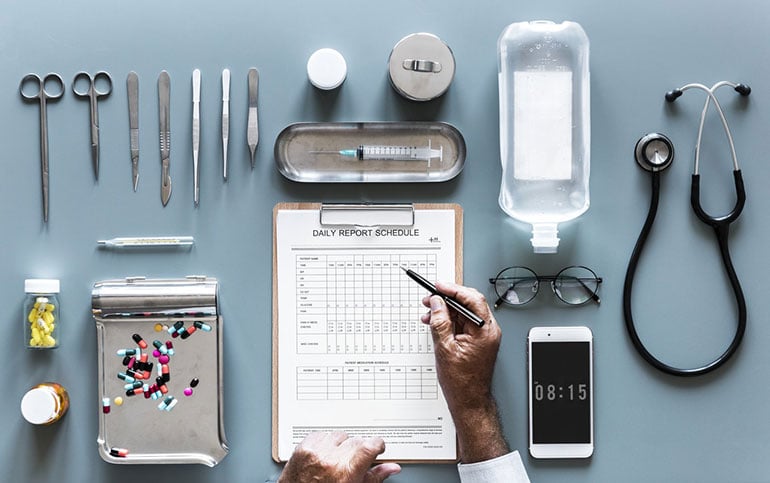Hospitals and healthcare facilities have a critical role to play in preparedness and response efforts or a range of emergency situations. This an include natural and man-made disasters, terrorist attacks and pandemic outbreaks.
The availability of healthcare is critical if such an event should take place, with the surge in demand during a health emergency well above what is usually demanded of a hospital or healthcare organization, even on a busy day.
To help maximize the use of resources and ensure that casualties aren’t increased as a result of the health system struggling to keep up during an emergency situation, hospitals and other healthcare organizations must be well-prepared in advance to take on a range of potential situations that could arise.
These are the essential features of a disaster preparedness system for healthcare organizations:
1. Planning
It is essential that healthcare organizations should have in place a suite of emergency preparedness plans that cover mitigation, preparedness, response and recovery.
It’s important that your organization undertakes a comprehensive review of the emergency planning that is in place. Take a look at your organization’s resources, including staffing, facilities, equipment and so on. How well does it perform when you are stretched in a normal busy period? How would your systems cope if there was a mass casualty incident?
Planning for a different range of scenarios can help you to identify strengths and weaknesses in your hospital or healthcare organization’s capacity to respond should a disaster occur. You should then put strategies in place to address these, and have clear, easy-to-follow plans that your employees can follow should the unfortunate occur.
These plans should cover a range of scenarios from natural disasters to pandemics to emergency situations caused by a mass shooter or terrorist event. Planning should include how to allocate resources, triaging and even evacuation of patients.
2. Command and leadership
When there is a crisis you will quickly need to bring together a management team to coordinate and lead other employees in what is expected. Identifying staff members well in advance who can take on these roles is critical, and they should be trained appropriately in managing this function in a disaster.
Likewise, all your employees should be trained in what is expected of them during an emergency situation. Running a range of simulations, drills and other training exercises is a good idea so staff can respond appropriately during an actual emergency.
3. Training
It isn’t enough to only train the staff with identified command and leadership roles. Every single employee should know what is expected of them during a disaster situation. Flying blind can lead to greater scope for error, which could be a disaster in and of itself.
Depending where you are located in the world, there may actually be legally mandated minimum requirements for staff training for disaster preparedness.
4. Evacuation plans
Sometimes your hospital or healthcare facility might find itself caught up in an emergency situation not in the role that you had imagined – but as another casualty of the emergency situation, not in a response role.
When your organization finds itself in the midst of an emergency in this way, the health and safety of patients and staff is the number one priority. It may be necessary to evacuate part, if not all, of your facilities. You will need evacuation plans in place ahead of time, once more with staff having clearly identified roles and appropriate levels of training.
5. Collaboration
Depending on your geographic location, it can be prudent to collaborate with other hospital and healthcare organizations in your area to have a unified plan when a disaster occurs. This can include determining how to triage casualties through to evacuating patients from one facility to another should the need arise.
It’s also important to collaborate with emergency management agencies and government departments when formulating your plans.
6. Communications
During a disaster situation, having excellent communications processes and systems in place is essential. Poor communication could lead to an increase in casualties and wasted resources.
Download for free

As well as knowing when and why to communicate, you need to understand who you need to communicate with and how. Finding a reliable communications channel for internal use is essential.
Many hospital and healthcare organizations have successfully used DeskAlerts to communicate with staff during a crisis situation. The system sends pop-up notifications to all PC desktops and cannot be missed or ignored, no matter what software is in use at the time. This is guaranteed to get everyone’s attention so they can follow instructions to manage the disaster.
>>> Learn more about emergency communication system <<<
7. Exercises
Exercises are critical to put a healthcare organization’s disaster plan to the test, to see what works and what doesn’t work and what needs to be improved on. When deficiencies are identified, actions can be taken to improve these well in advance of an actual disaster situation unfolding.
 Caroline Duncan
Caroline Duncan






.jpg)

